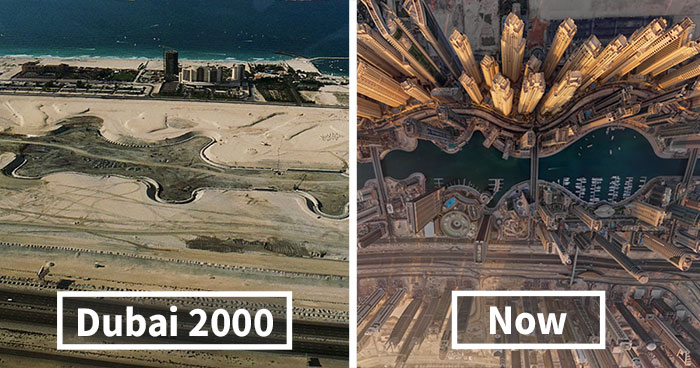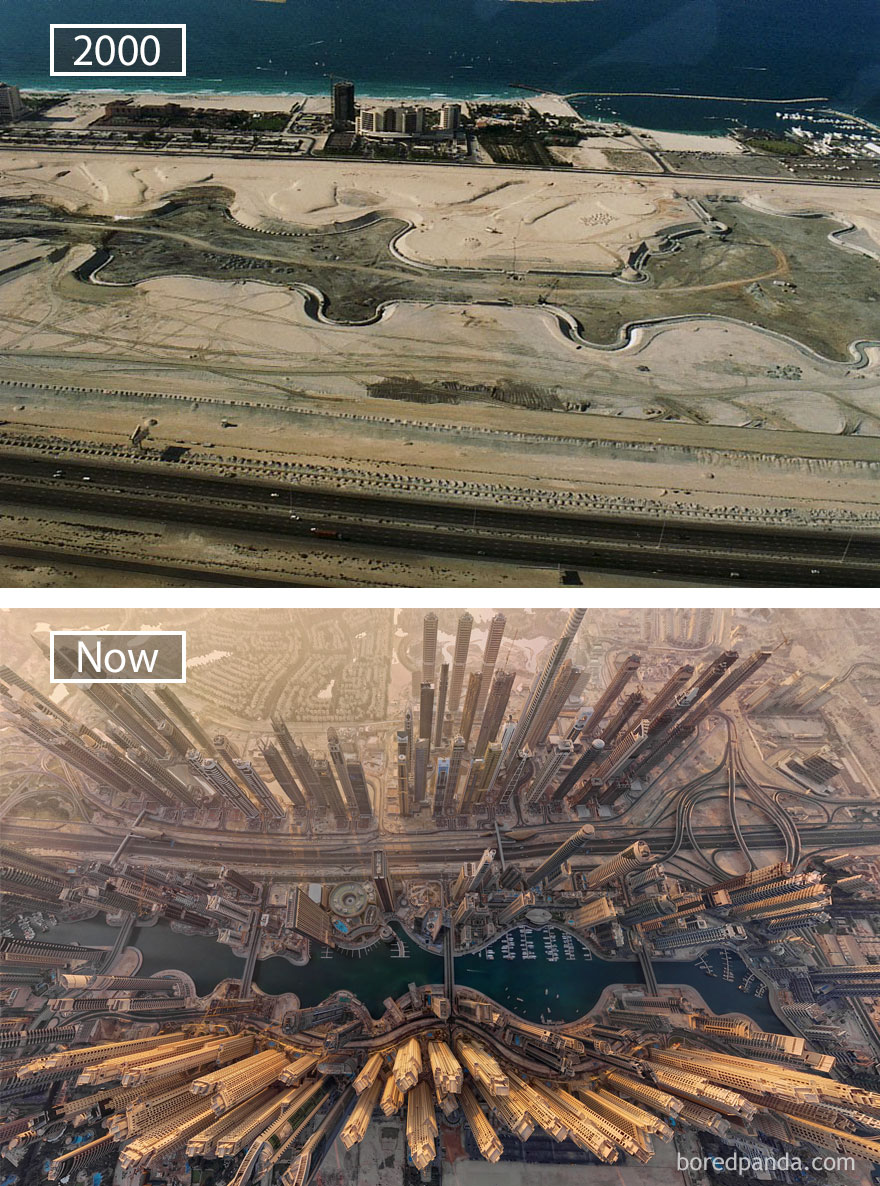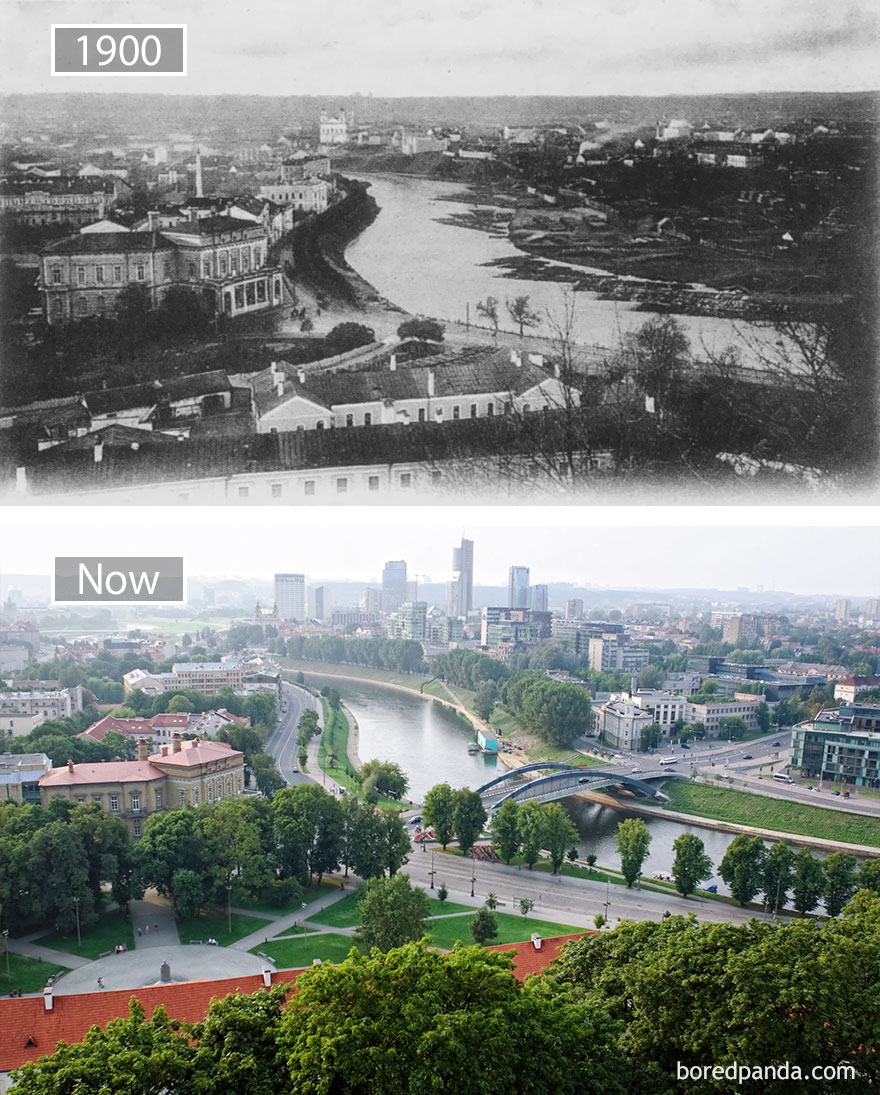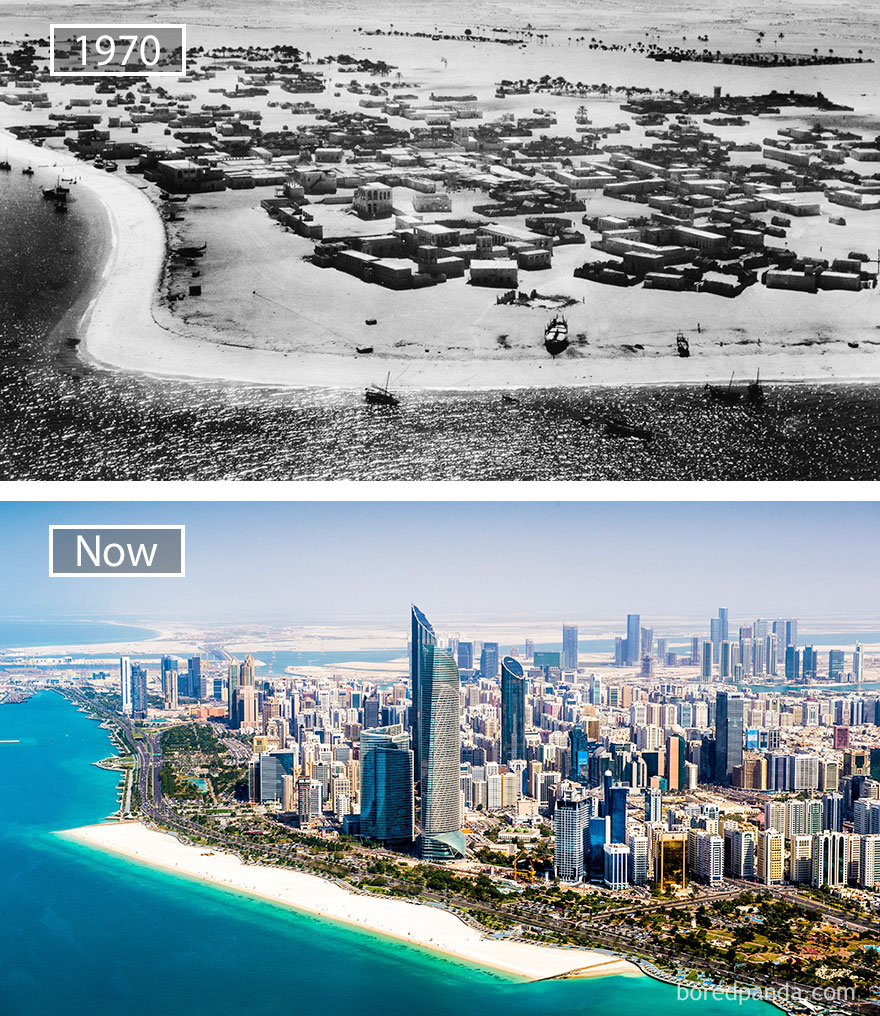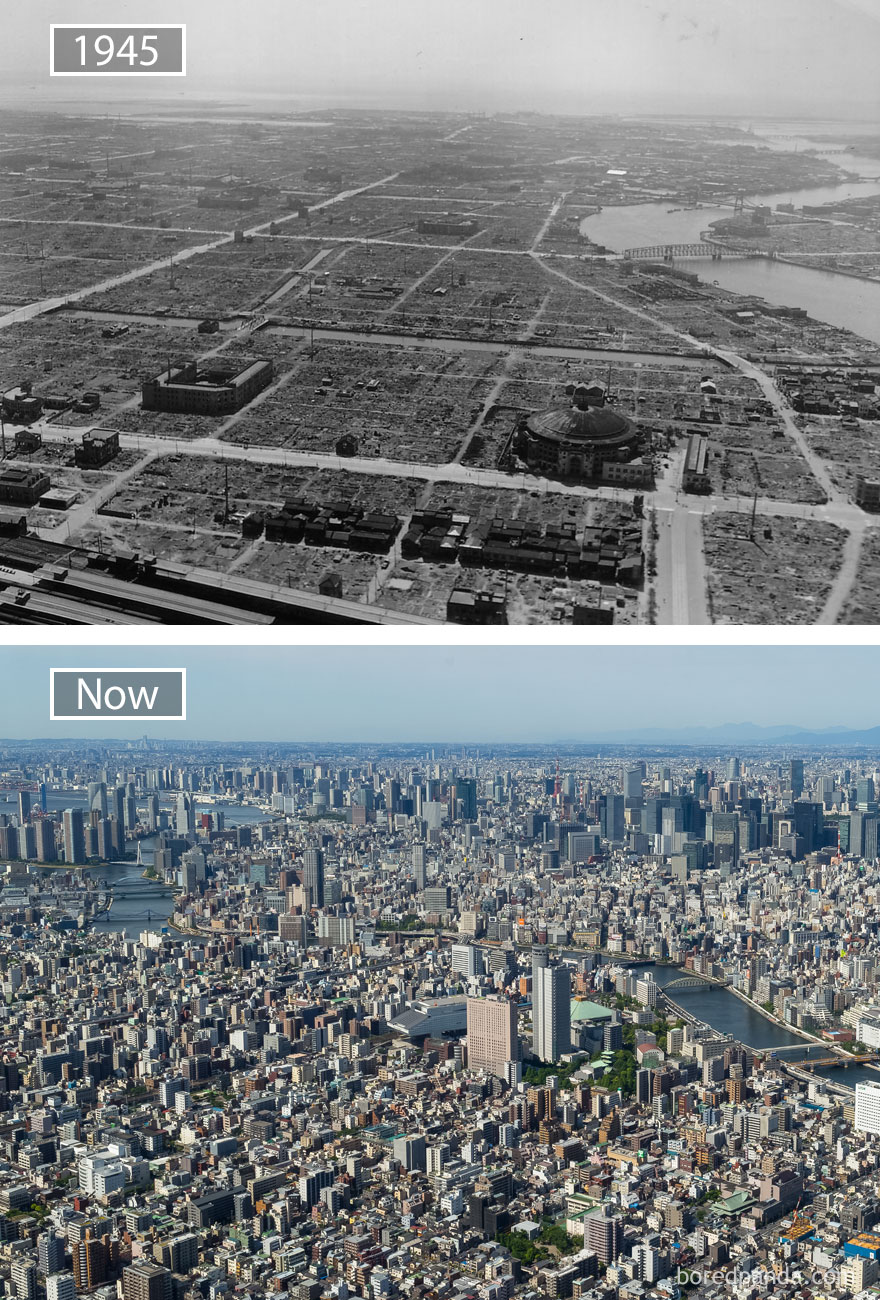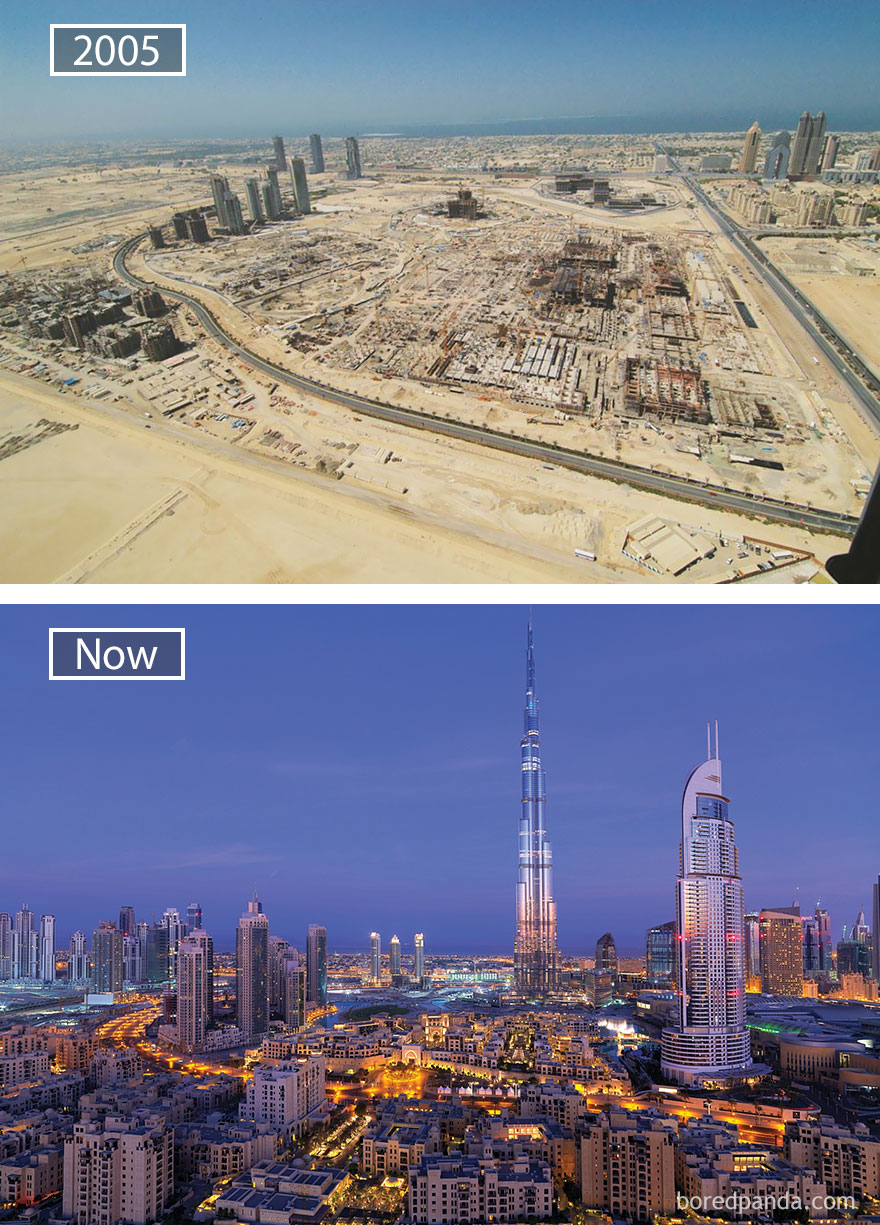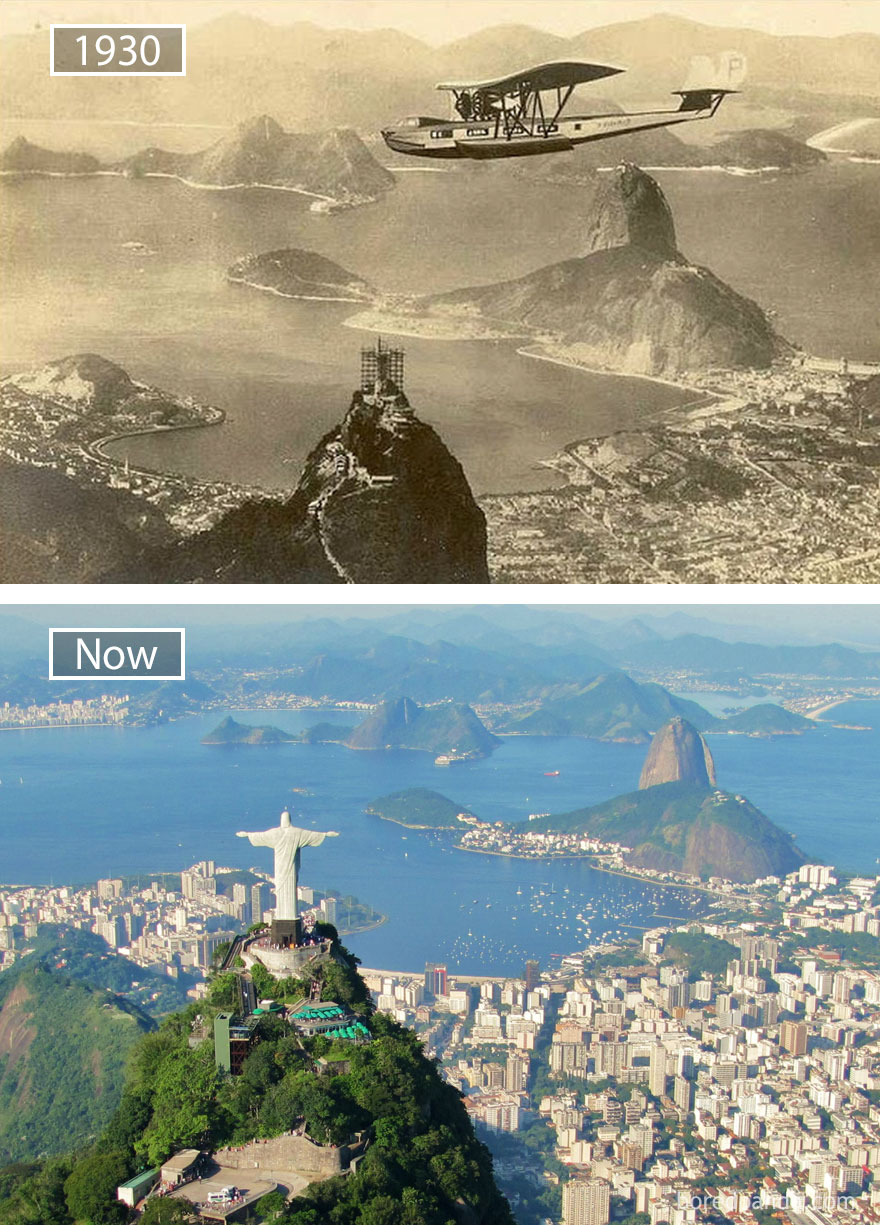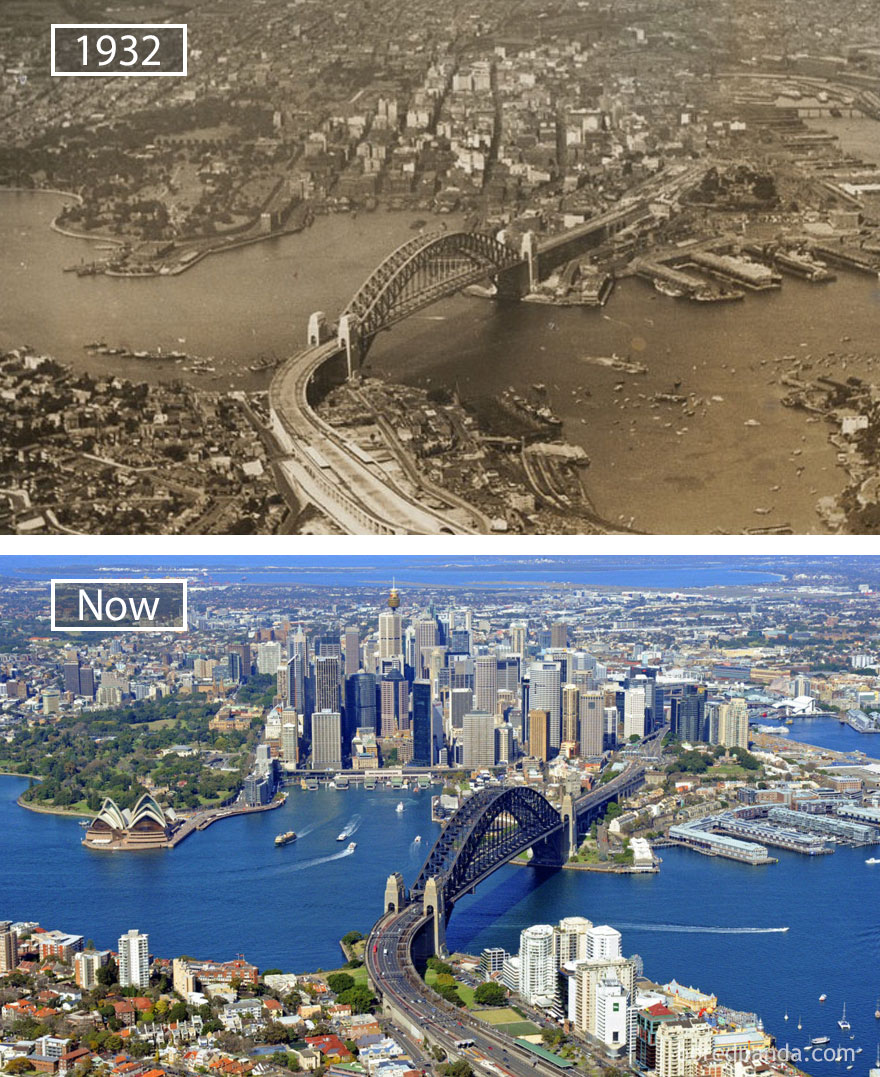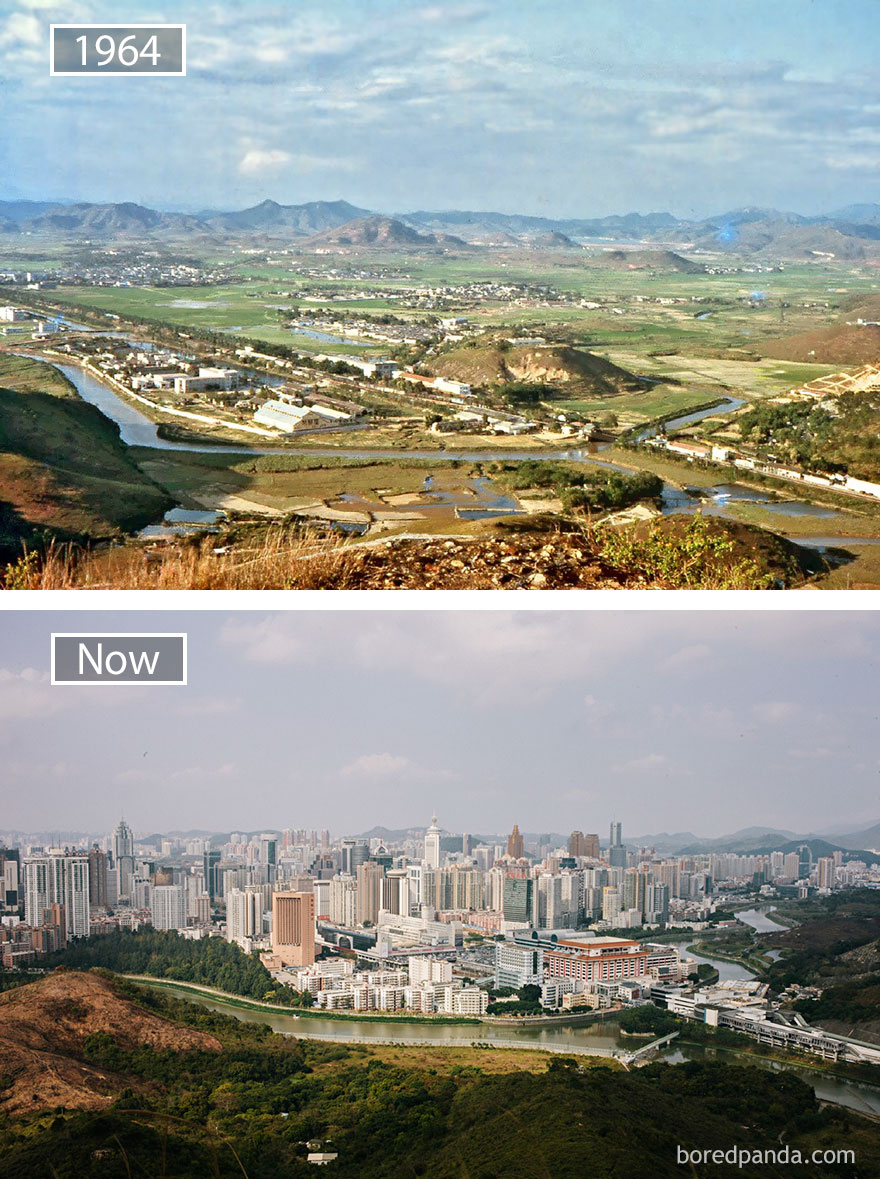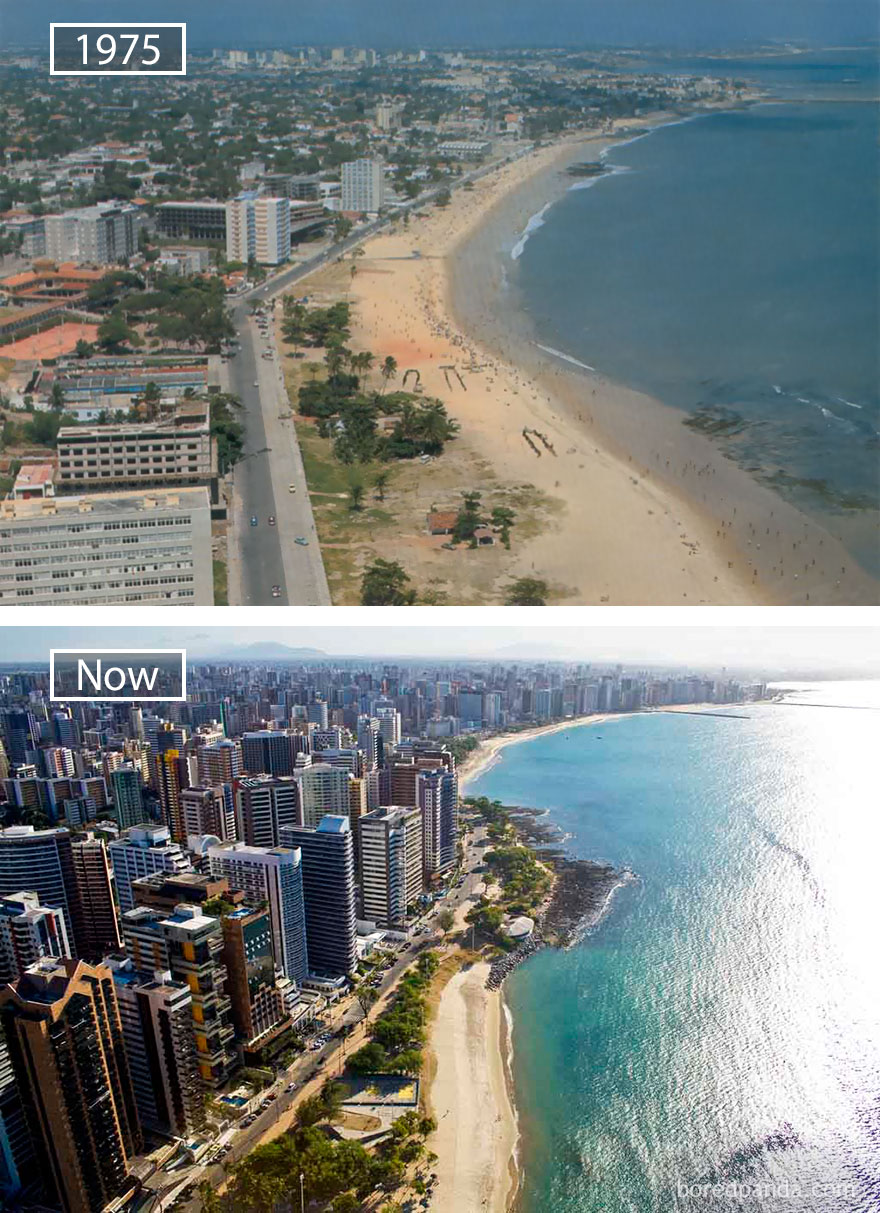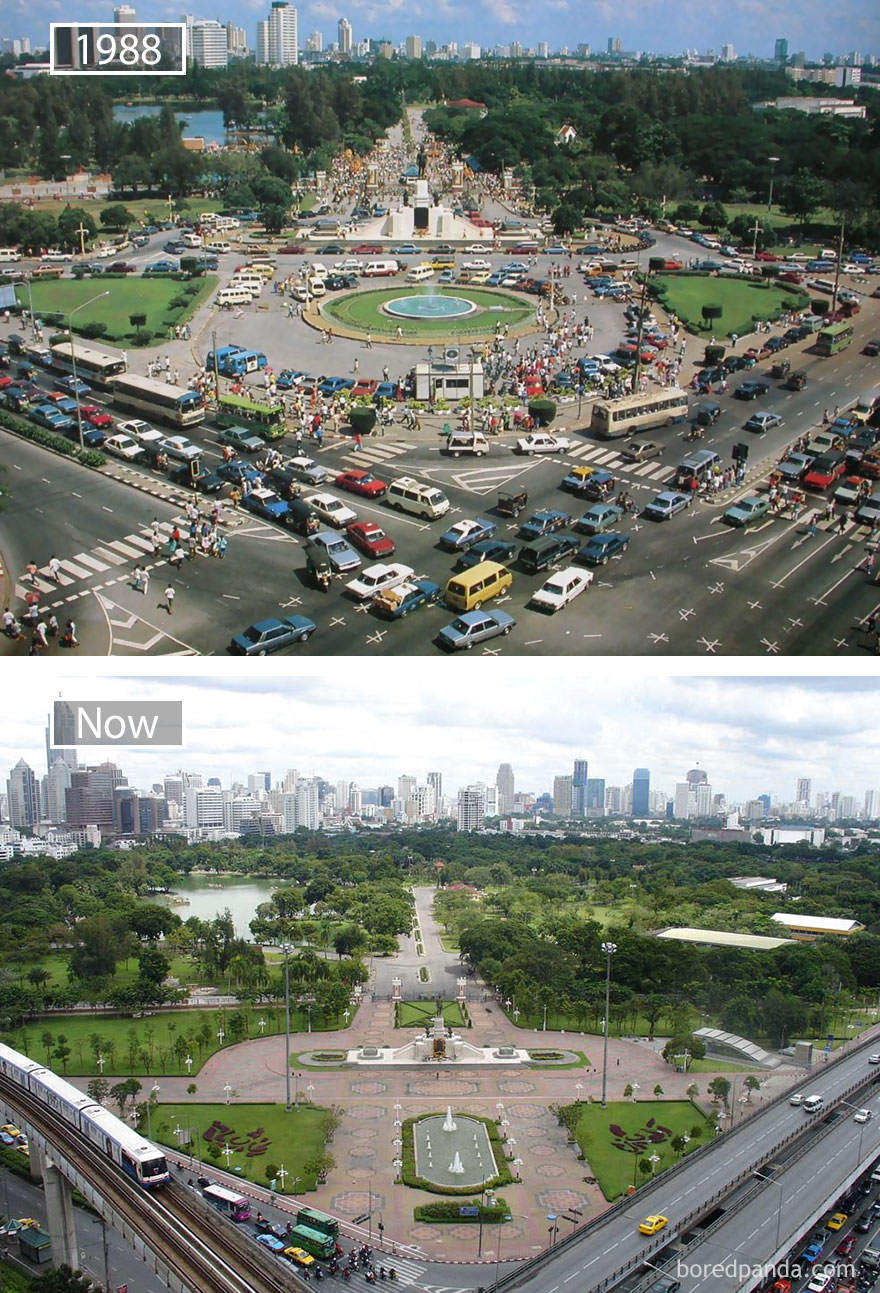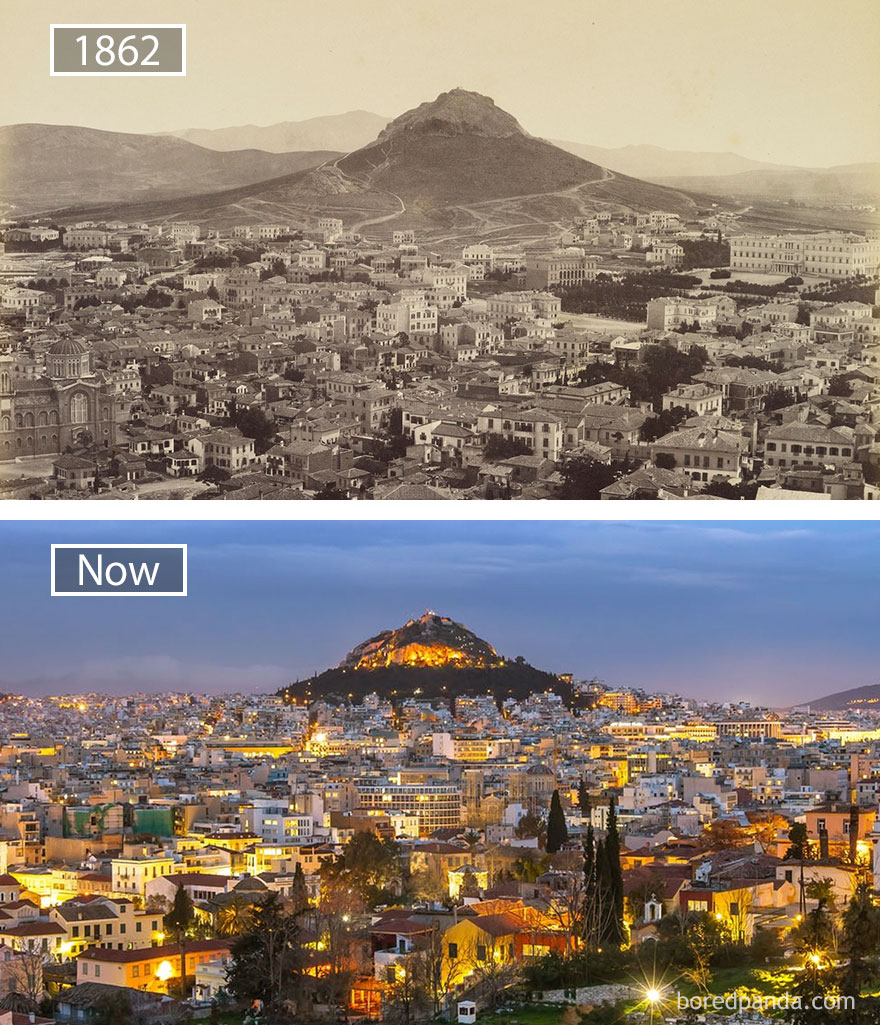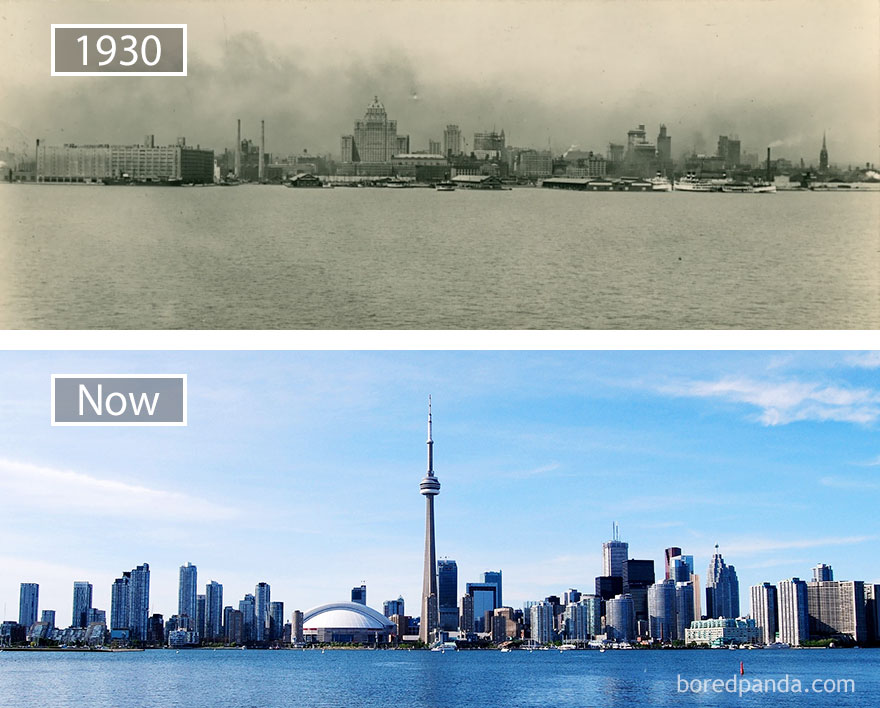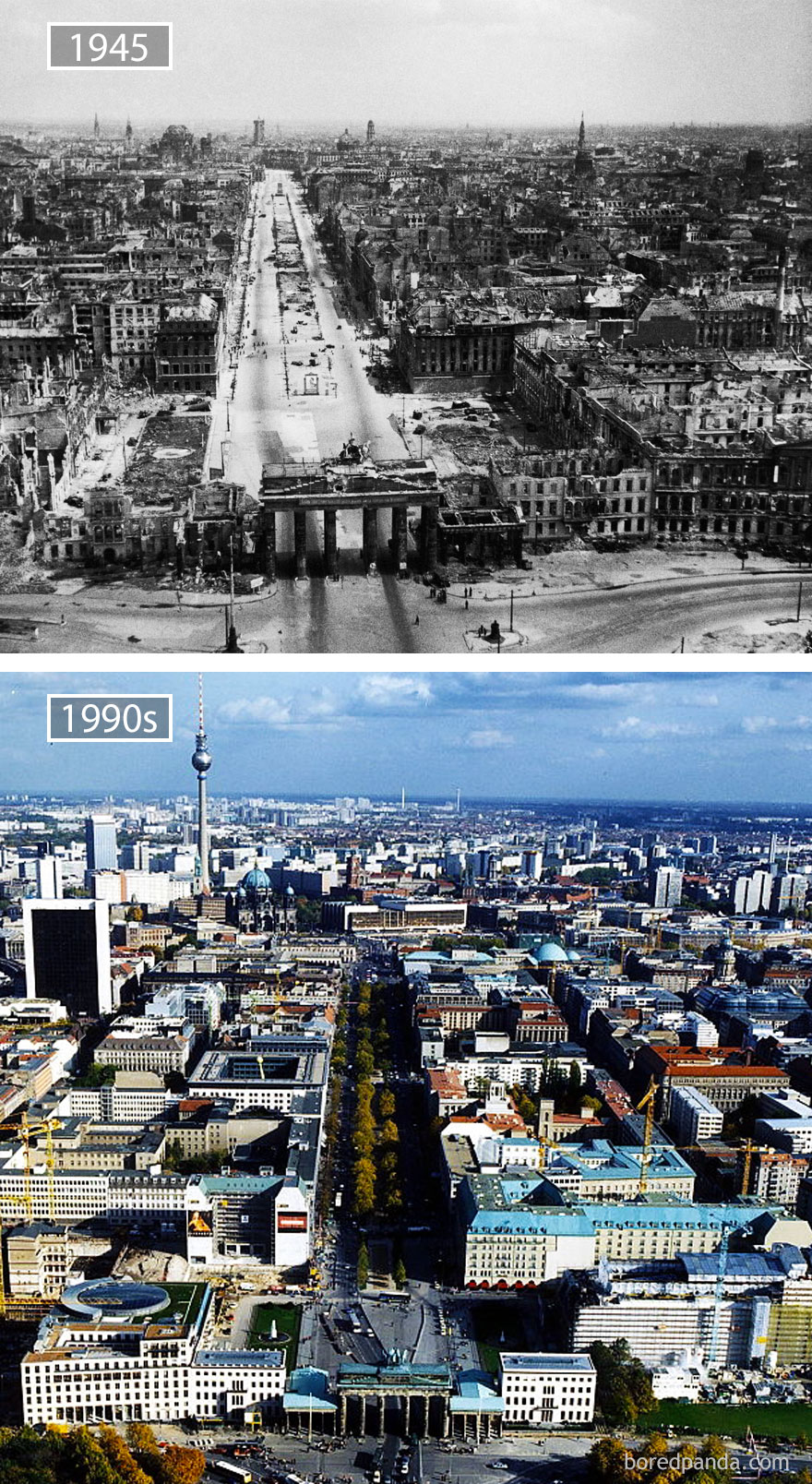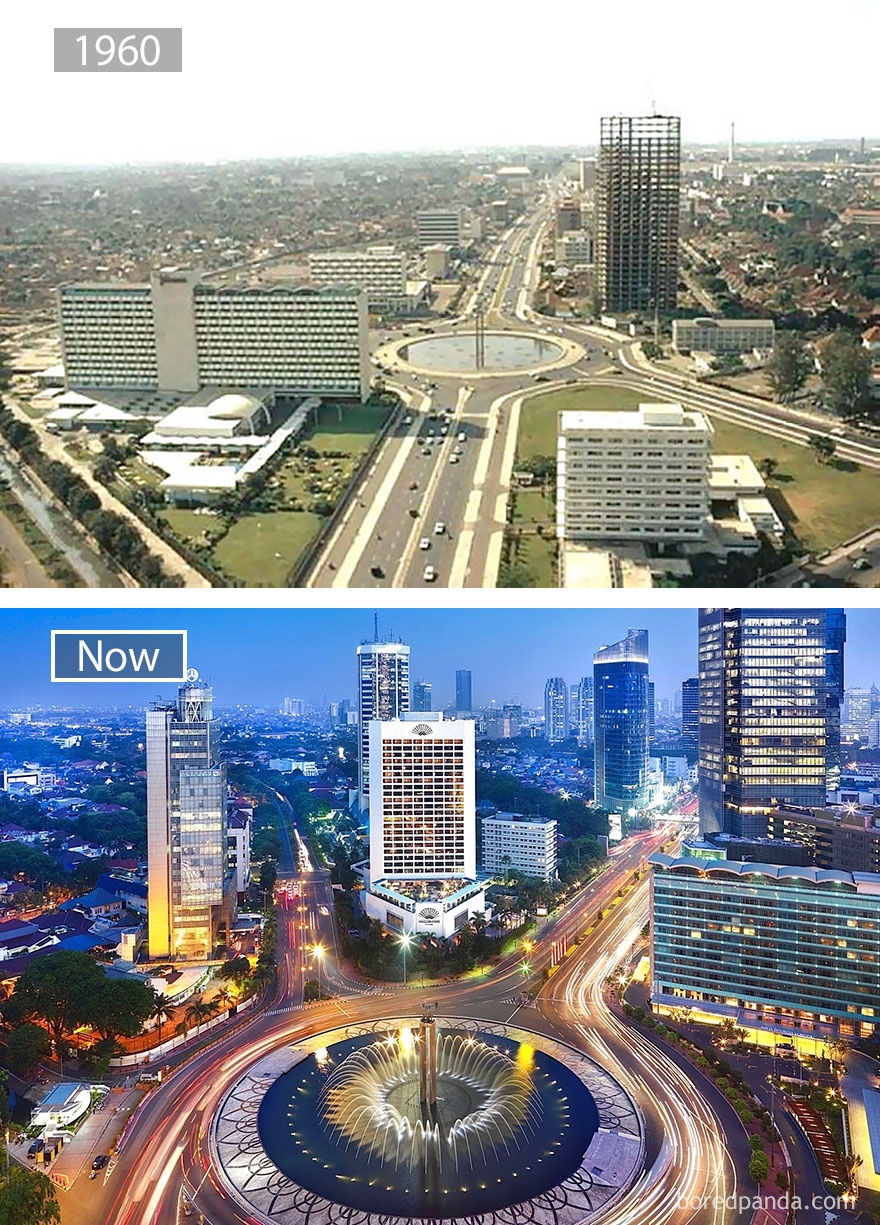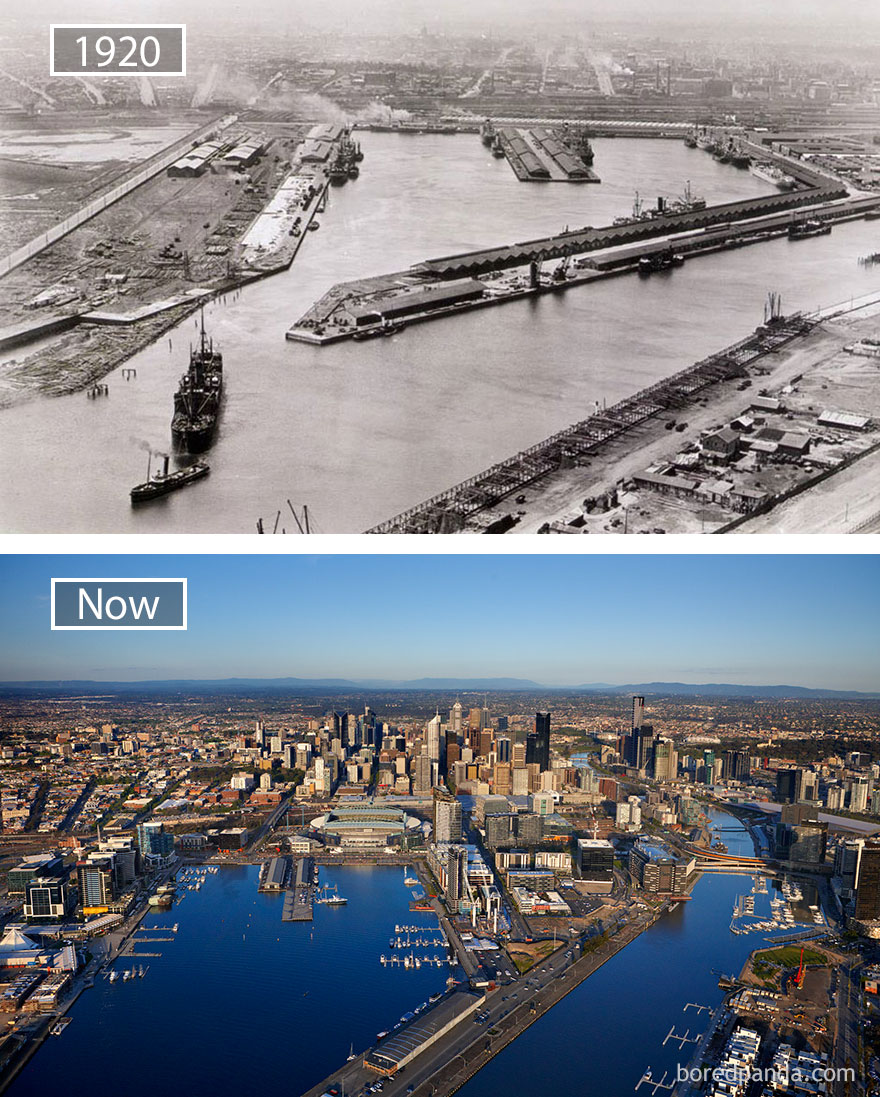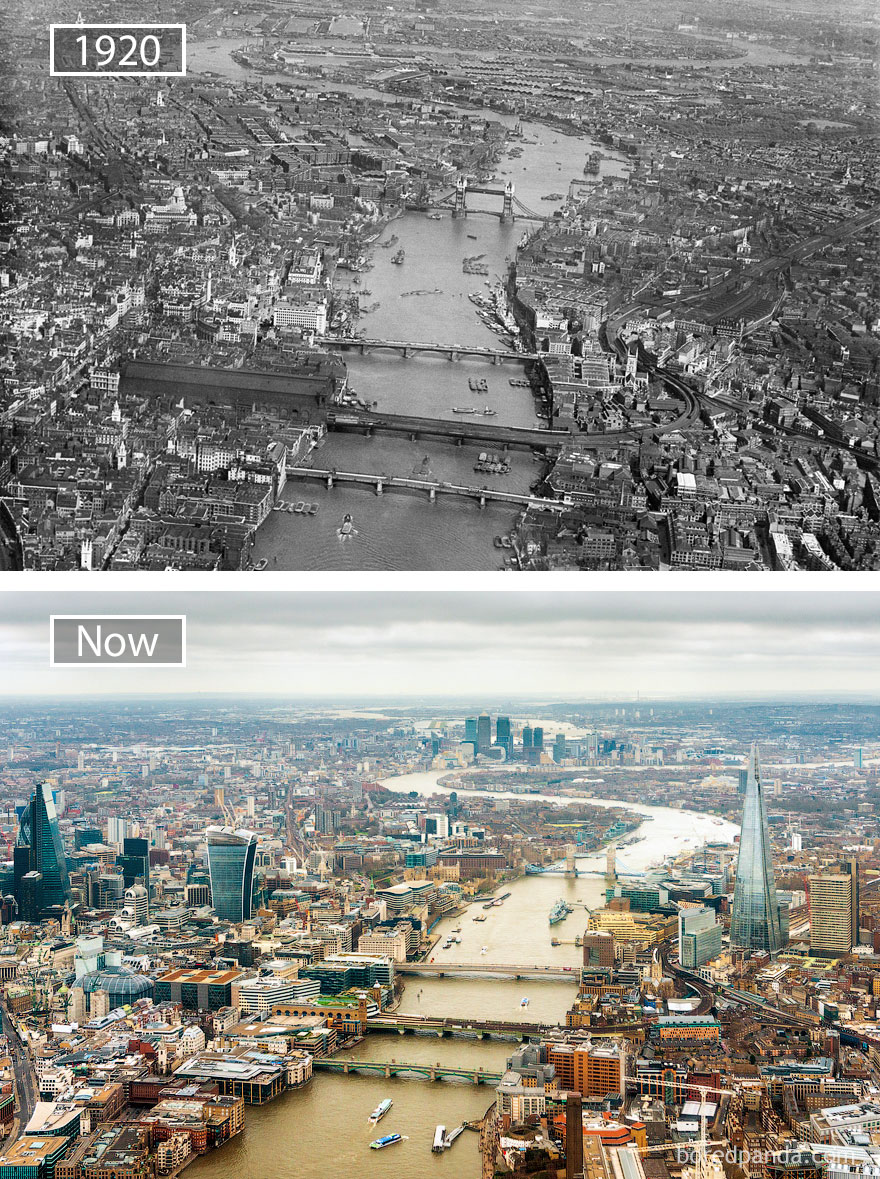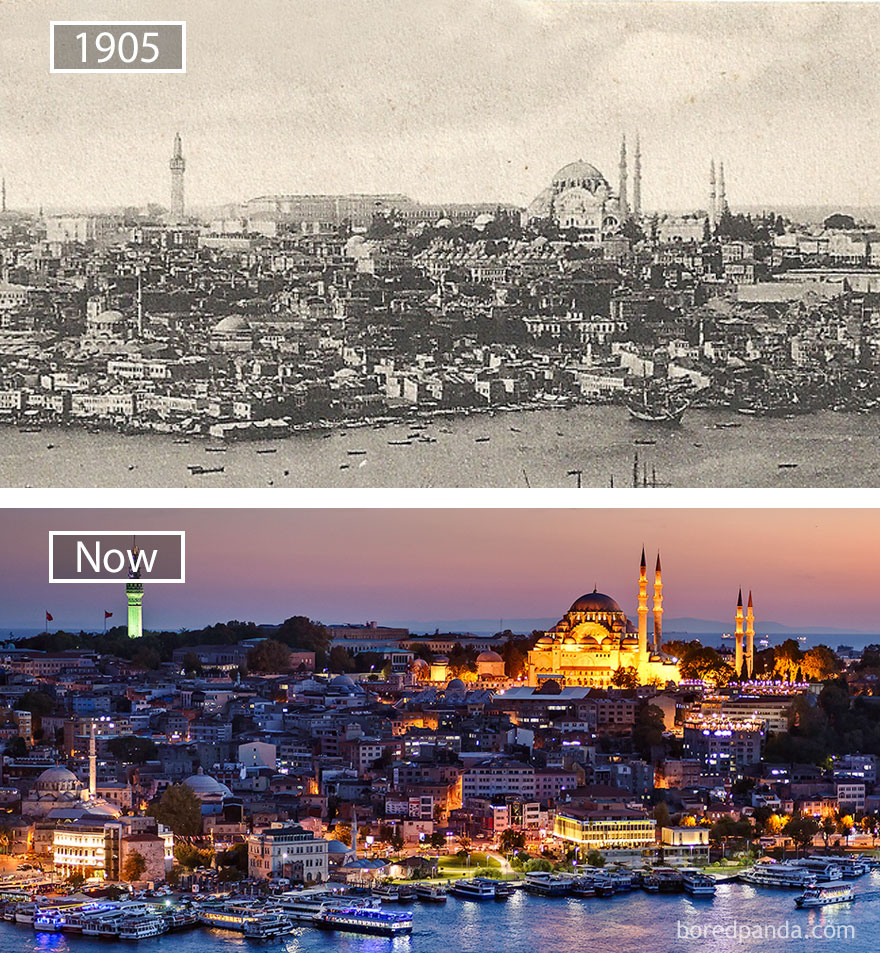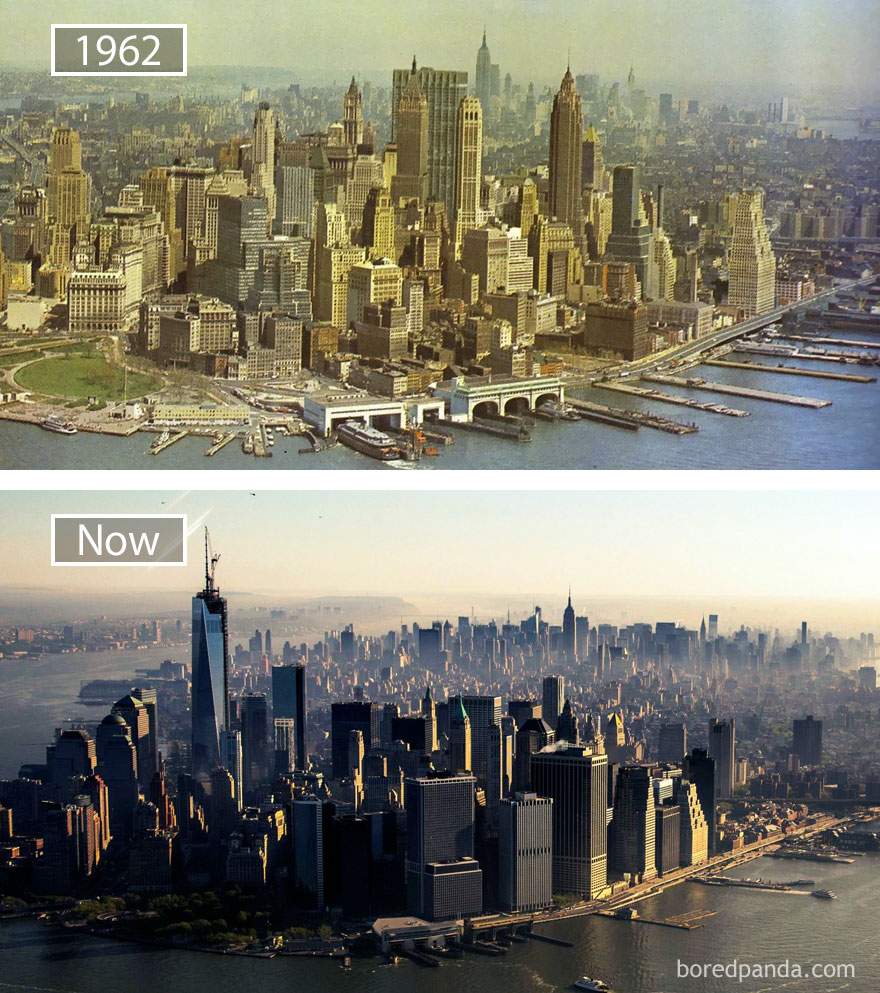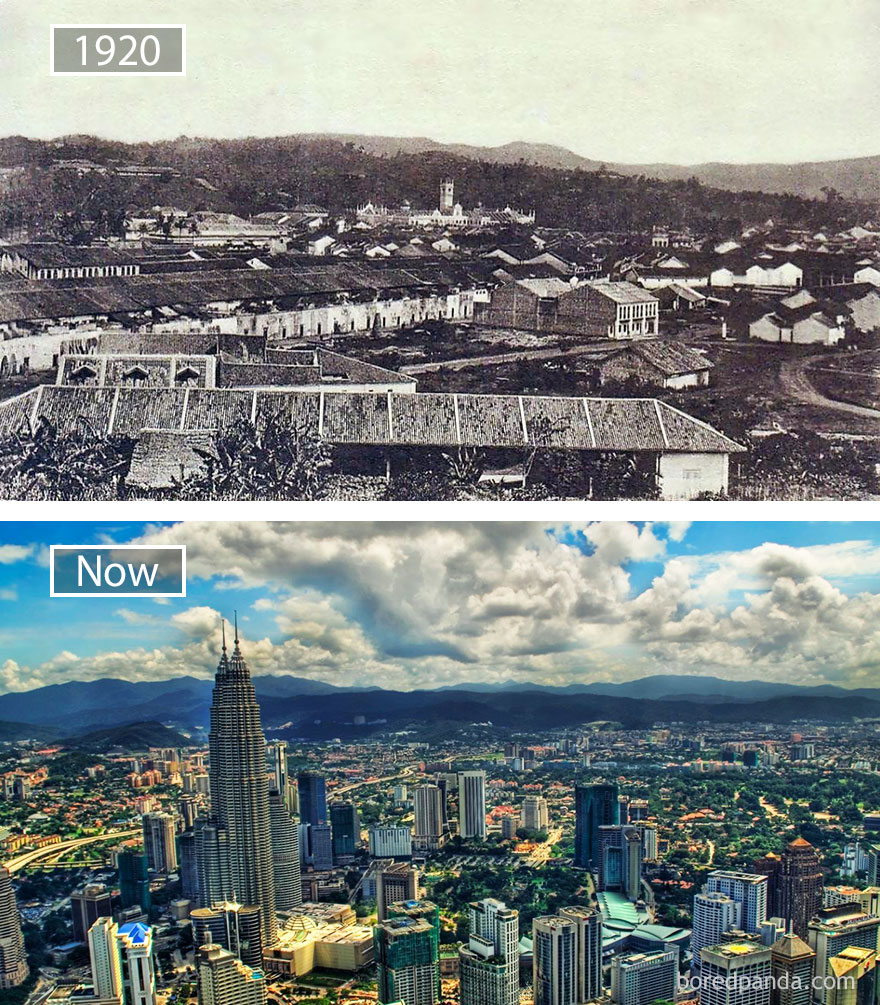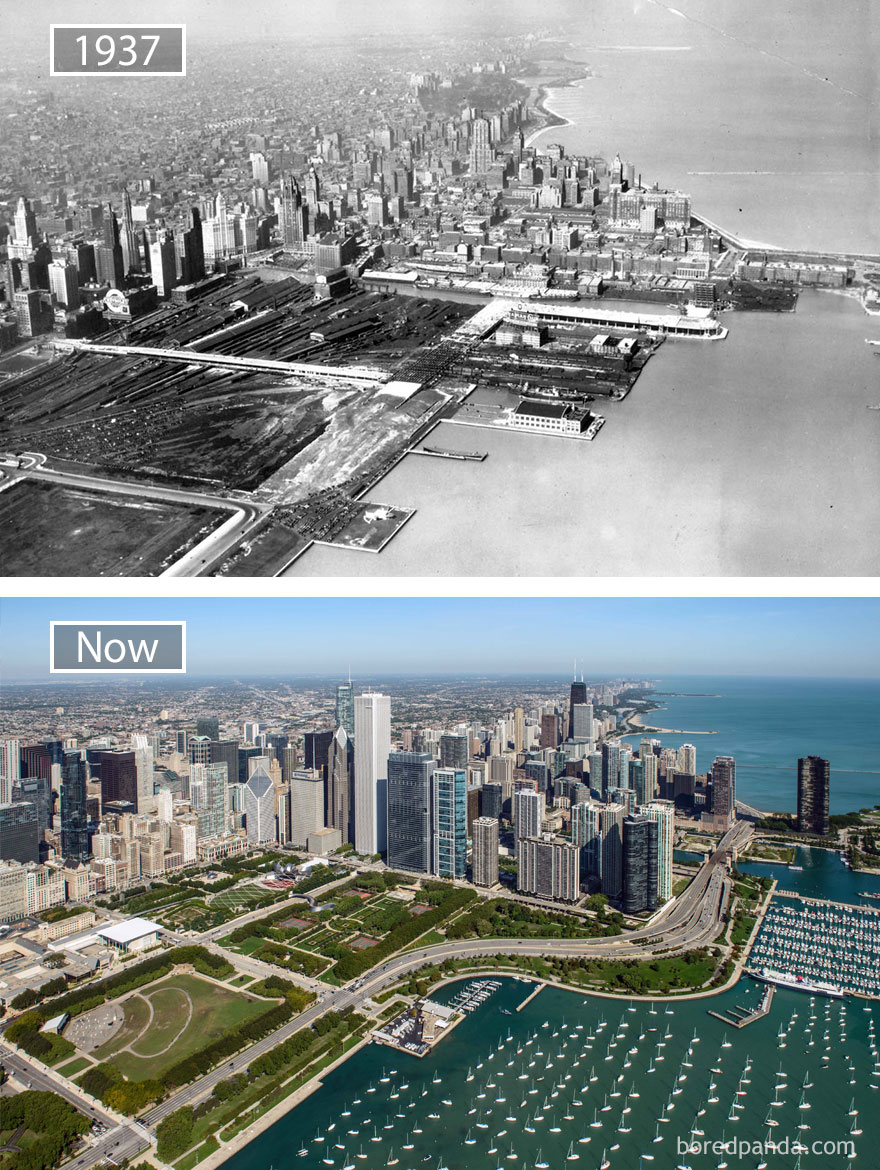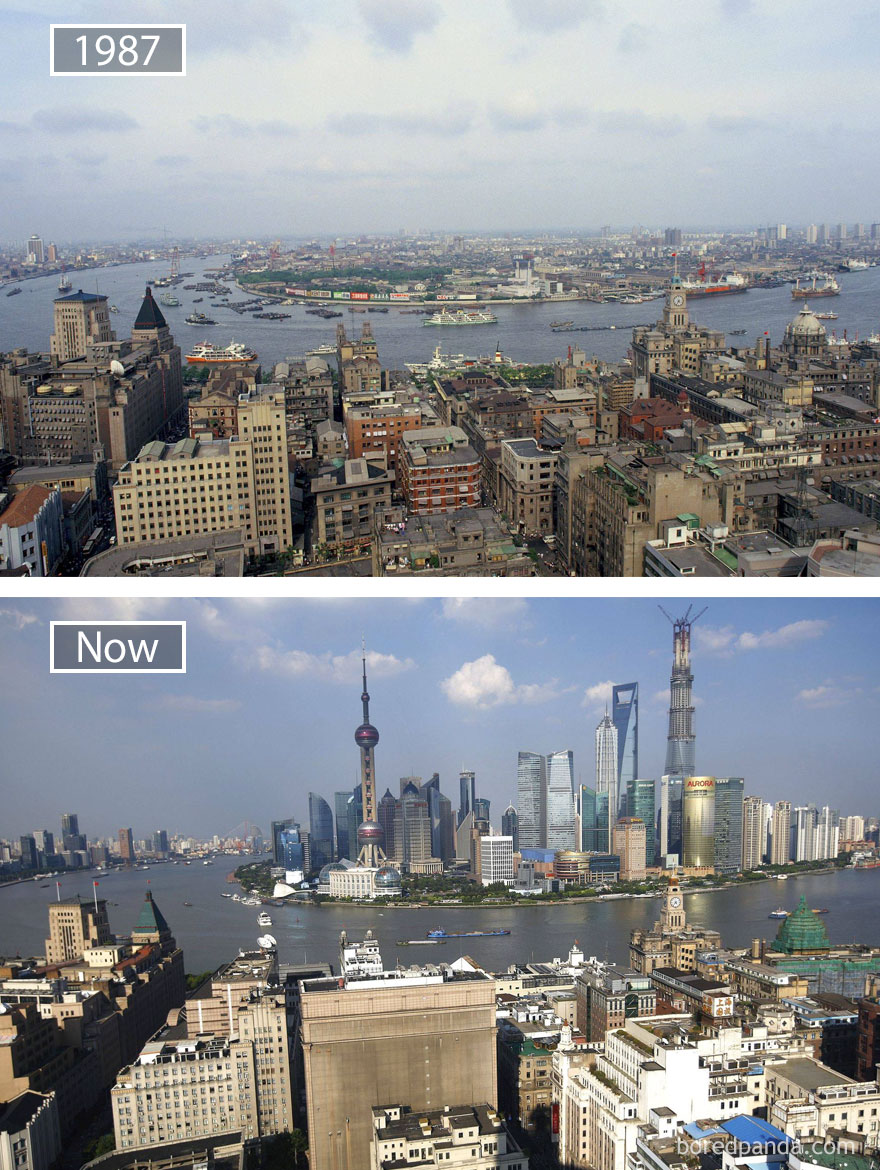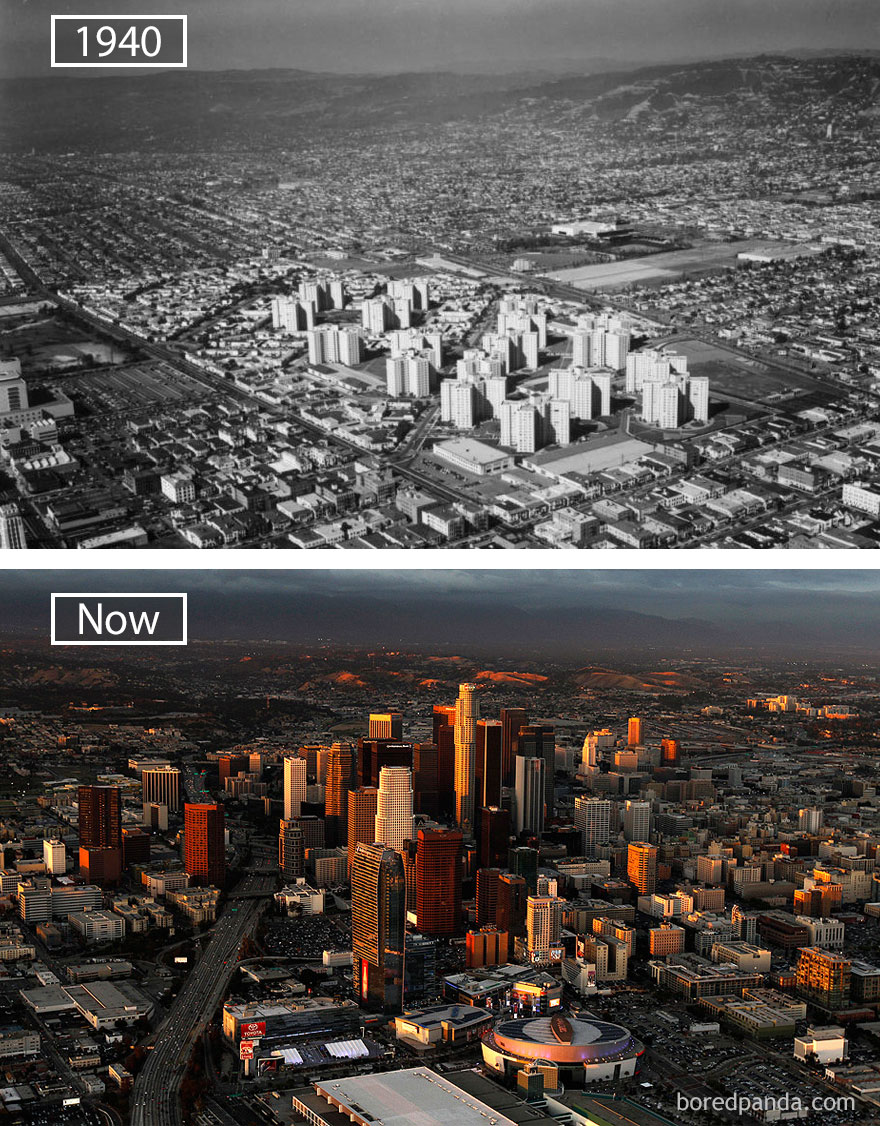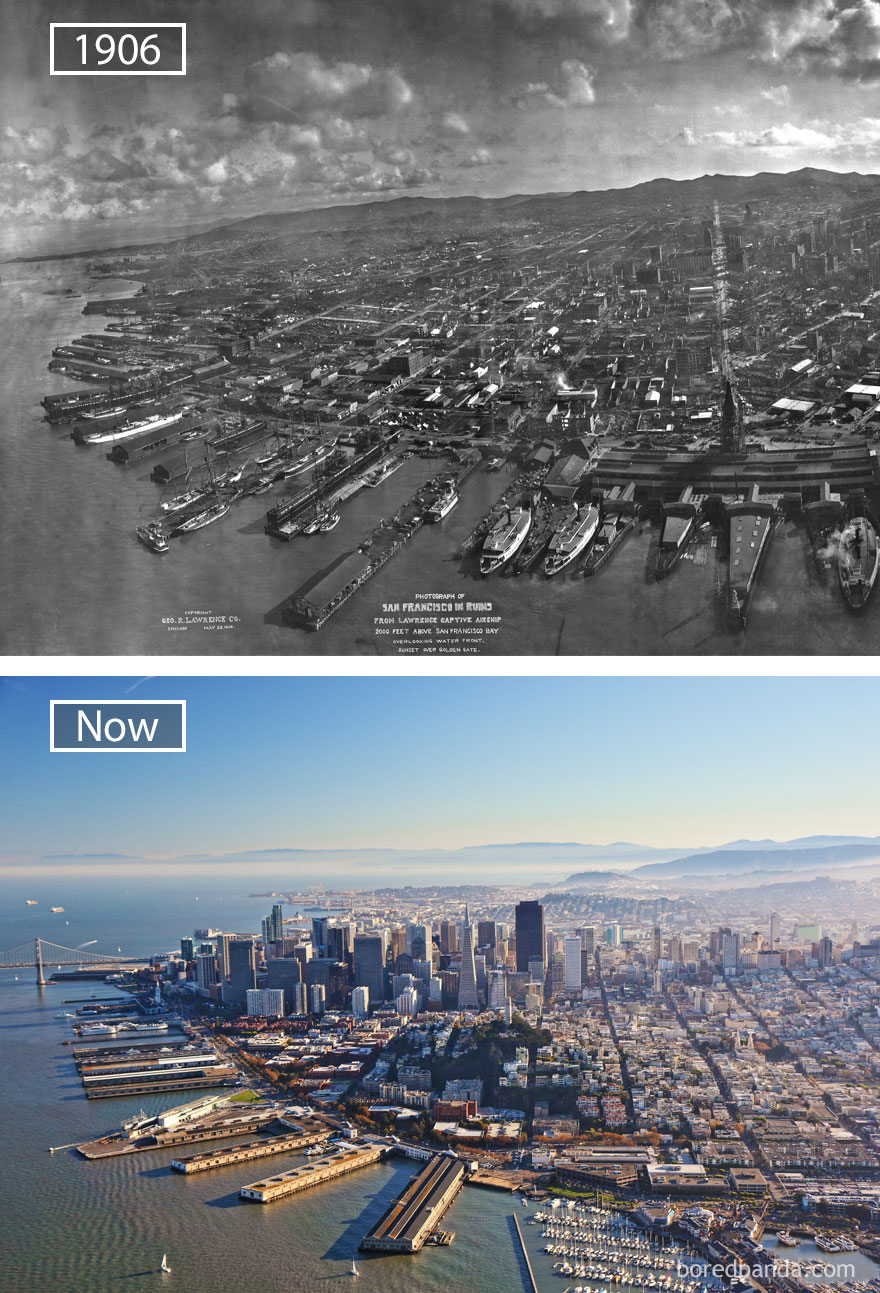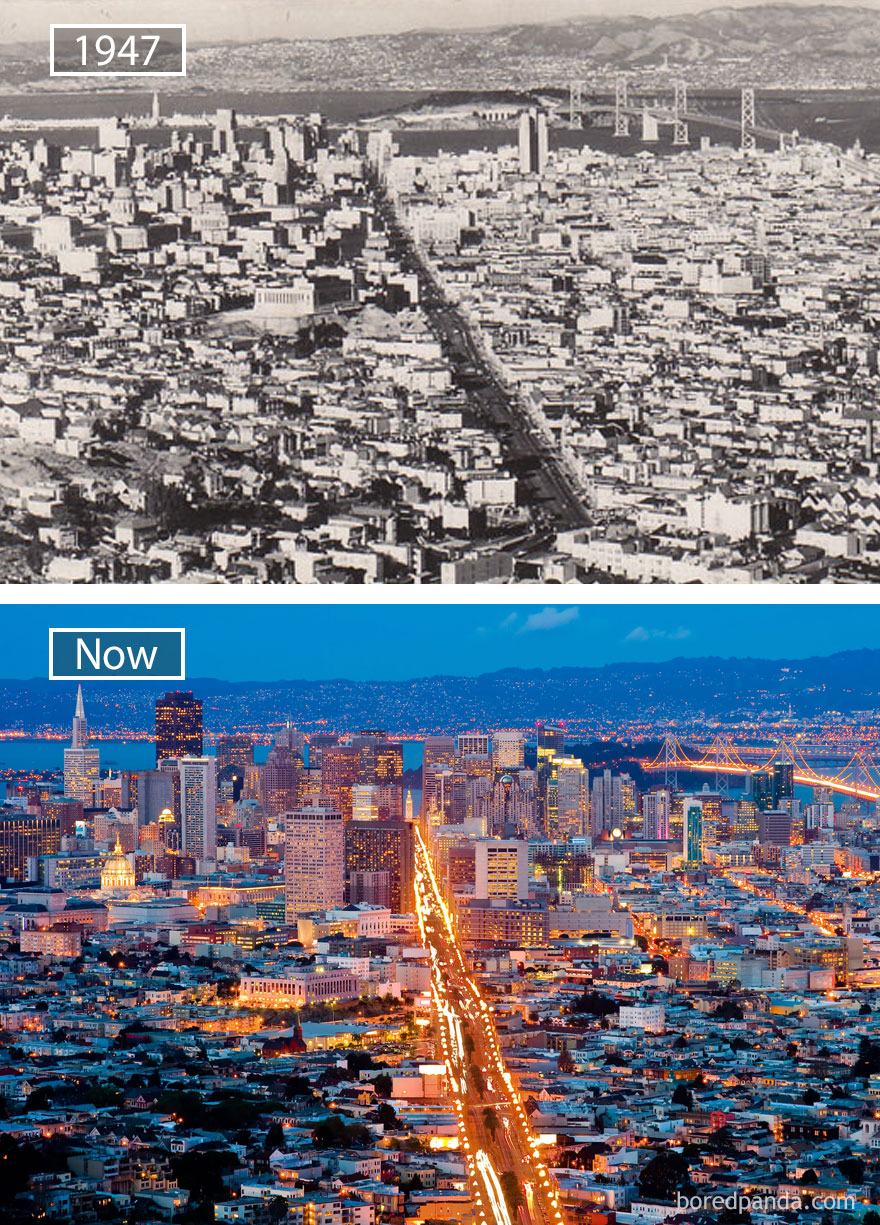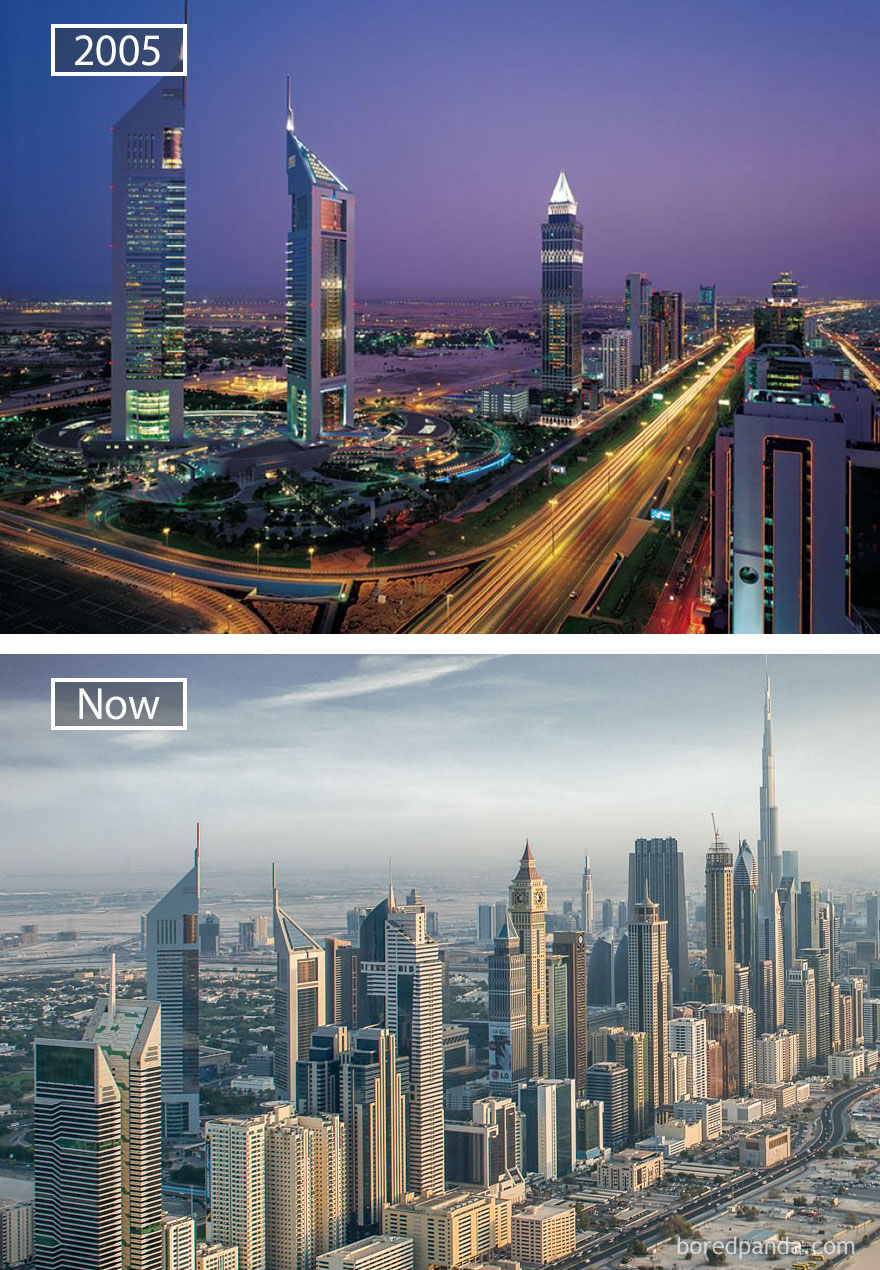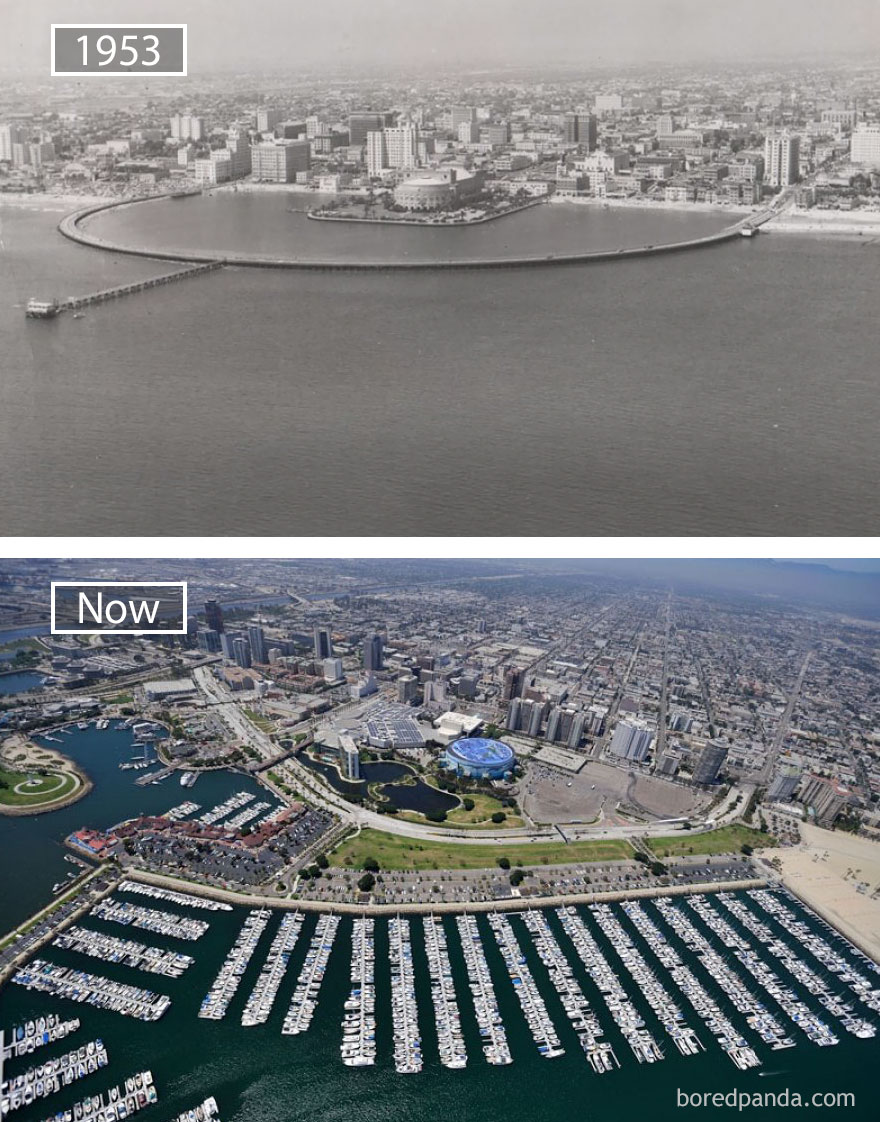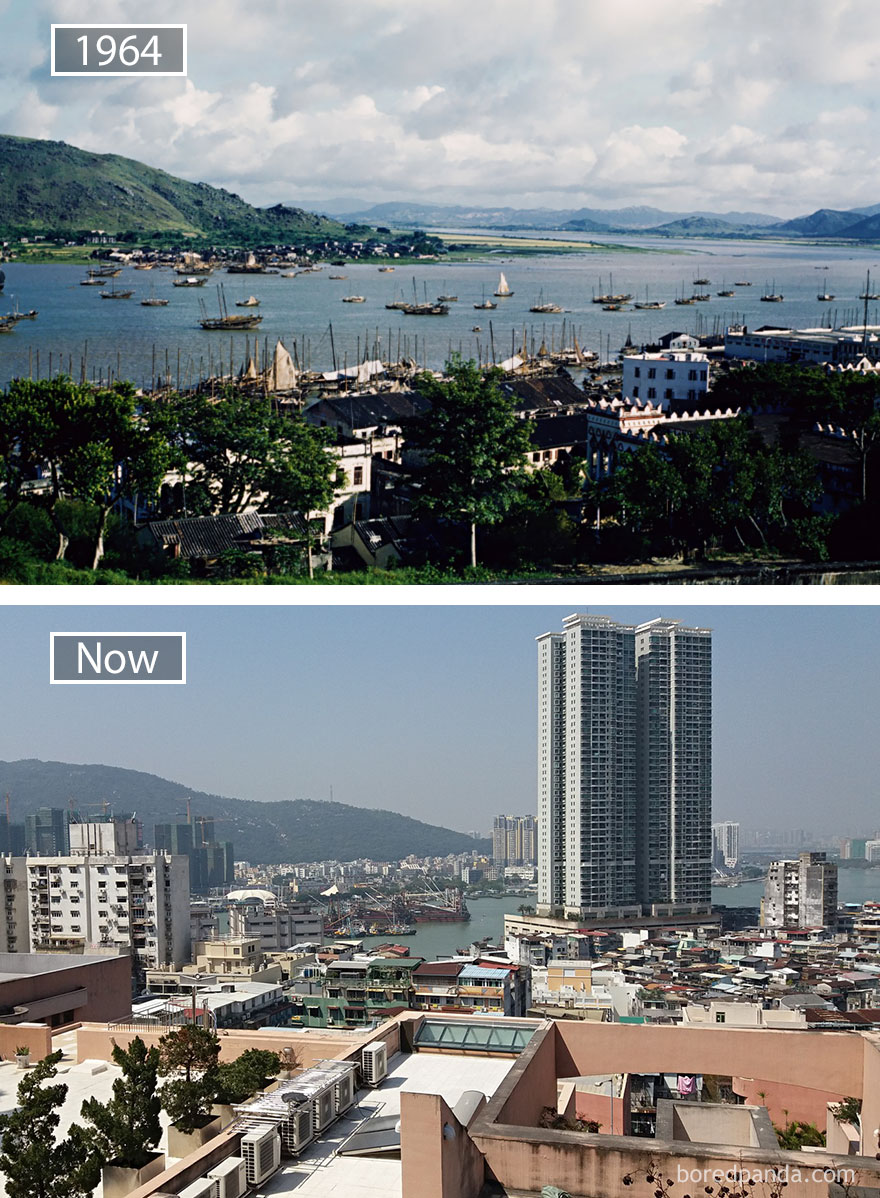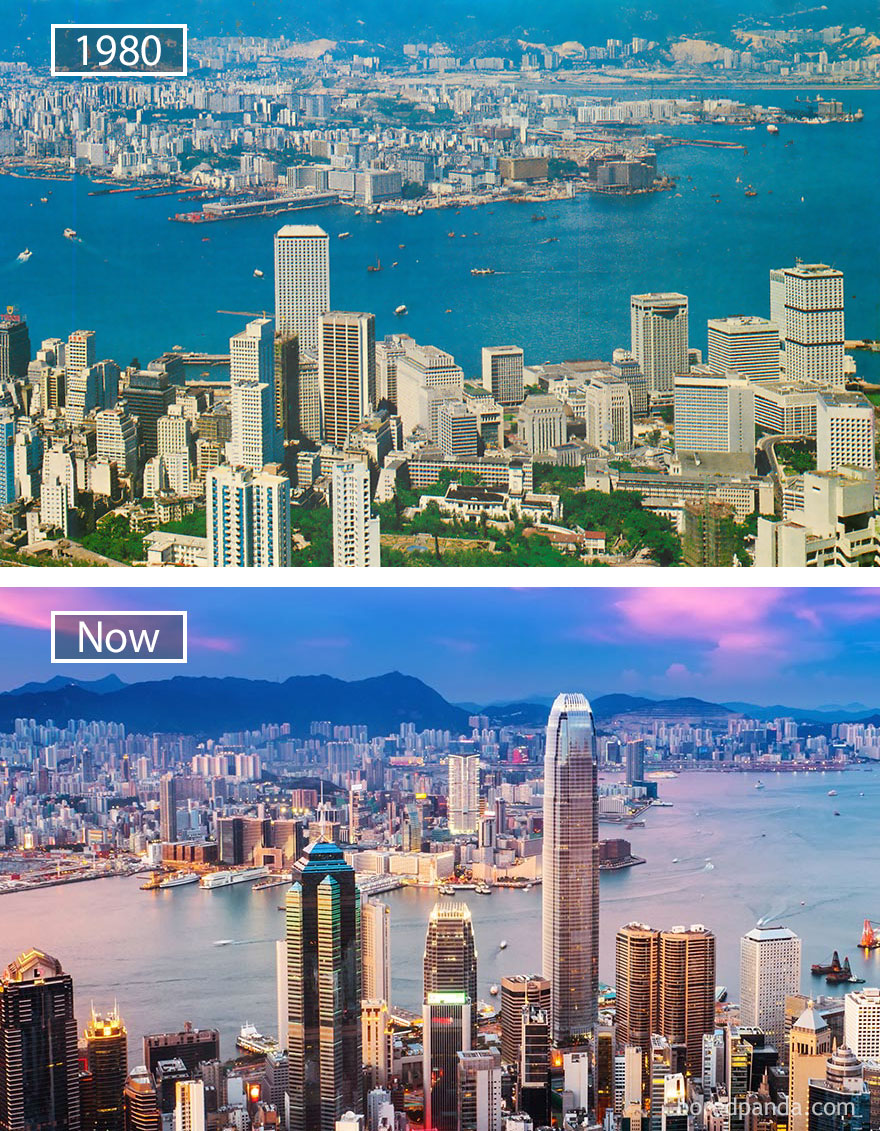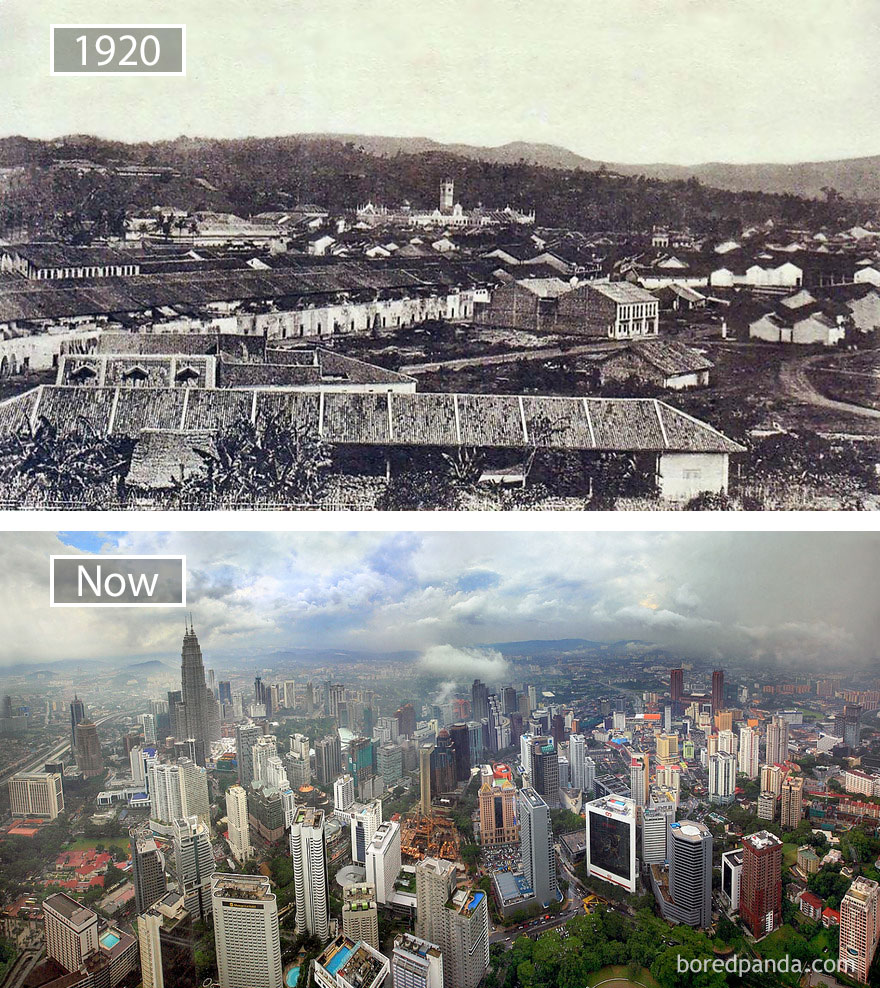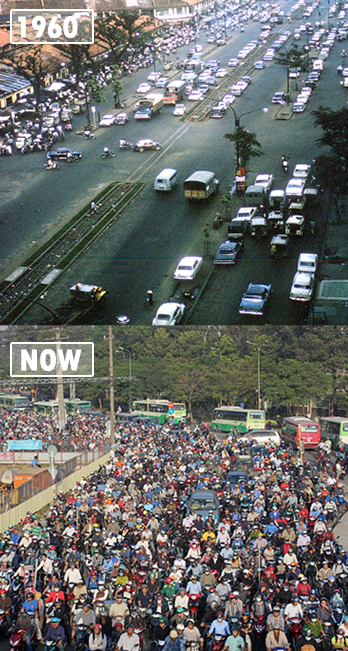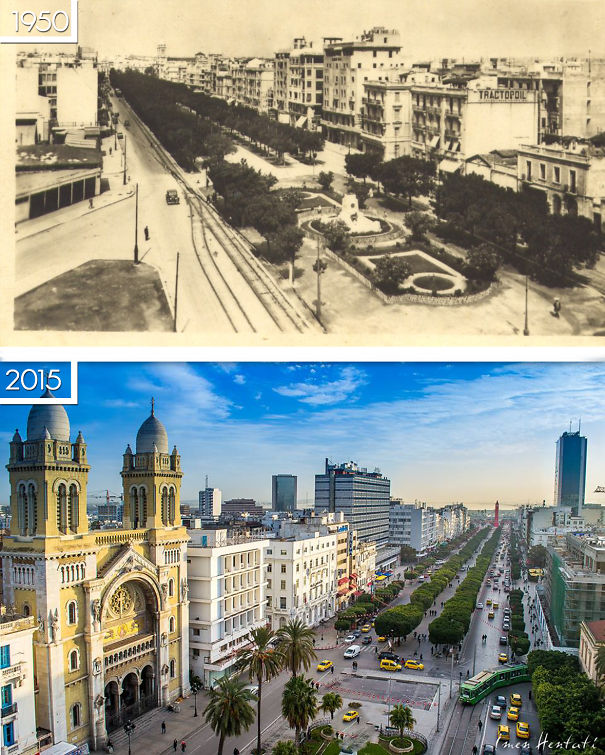Believe it or not, but the oldest continuously inhabited city in the world counts its existence for 11,000 years as of today. The town, Damascus, is the Syrian capital city, and astonishingly enough, not much has changed behind this ancient city's walls. However, not many towns keep the same faces for such a long time, often changing and evolving. Sometimes the city development makes it even more beautiful, but as it is in a more often case, the alluring greenery and historical houses have to make way for skyscrapers in the ever-changing city skyline.
The world has increased over the last 100 years that it's difficult to imagine just how much things have changed during that time. Many of the world's most famous cities and country capitals - like Kuala Lumpur for example, or Hong Kong - bare little resemblance to their earlier selves, and cities such as Dubai didn't even exist at all until relatively recently.
Take a look at these before and after pictures of beautiful cities to see what we mean. Compiled by Bored Panda, they're sure to give you a fresh perspective on how you look at the world's biggest cities and settlements.
This post may include affiliate links.
Dubai, United Arab Emirates - 2000 And Now
Seoul, South Korea - 1900 And Now
Vilnius, Lithuania - 1900 And Now
Abu Dhabi, United Arab Emirates - 1970 And Now
Singapore, Republic Of Singapore – 2000 And Now
Tokyo, Japan - 1945 And Now
That's impressive. Especially since they've had to rebuild after a dozen Godzilla attacks.
Dubai, United Arab Emirates - 2005 And Now
Rio De Janeiro, Brazil - 1930 And Now
Sydney, Australia - 1932 And Now
Shenzen, China - 1964 And Now
Fortaleza, Brazil - 1975 And Now
Bangkok, Thailand - 1988 And Now
Athens, Greece - 1862 And Now
Toronto, Canada - 1930 And Now
Berlin, Germany - 1945 And 1990s
Jakarta, Indonesia 1960 And Now
Melbourne, Australia - 1920 And Now
London, The Great Britain - 1920 And Now
Try to be accurate, this is basic geography. There is no "the" before "Great Britain", it's either "Great Britain" or "The United Kingdom", depending on which parts you are including in the reference.
Istanbul, Turkey - 1905 And Now
New York, Usa - 1962 And Now
Kuala Lumpur, Malaysia - 1920 And Now
Chicago, Usa 1937 And Now
Shanghai, China - 1987 And Now
Los Angeles, Usa - 1940 And Now
The 1940s photo of Los Angeles appears to be a view of the Fairfax district with the Park La Brea residential complex (built in 1944) highlighted in the center. And the "Now" photo is of downtown Los Angeles, several miles away, with several of the more recent buildings missing. The Now photo is at least 5 years old.
San Francisco, USA - 1906 And Now
San Francisco, Usa - 1947 And Now
Dubai, United Arab Emirates 2005 And Now
Every other place has changed over a period of 40, 50, 100 years... But UAE changed drastically over a period of 10 years!
Long Beach, Usa - 1953 And Now
Macau, China - 1964 And Now
Hong Kong, China - 1980 And Now
Kuala Lumpur, Malaysia - 1920 And Present
And all this at the cost and suffering of poor Mother Nature and the wildlife,what a cruel world!! :,(
In fairness, if you lived in one of those cities during the 1900's you wouldn't have been able to philosophise about Mother Nature because you would be busy stashing up on coal so you could survive the winter. Many of your friends would have died prematurely due to malnutrition, tuberculosis, war or some other disaster that that plagued the world at the beginning of 20th century. Only now, due those megapolises and the life-saving infrastructure they provide one can afford the economic security and intellectual liberty to philosophise about pollution, wildlife and mother nature.
Load More Replies...I find the changes horrible. The older pictures have a certain peace and quiet about them but with sh1tloads of skyscrapers everywhere, it looks claustrophobic and polluted. That's no development in my opinion.
It would be nice to see more before/after photos from different cities.
Panama city in Panama could be in the list , has changed a lot in the last 10 years.
Some of the photos look like they were taken from a different direction. That really throws off the perspective.
Planned high density urban development is a far better alternative than sprawl. If you really want to help, don't have any children.
You should definitely make a comparison of Warsaw; just after the war and now.
except cities destroyed by the war and then rebuilt, I prefer BEFORE. Now everything looks the same, and many of that is unsustainable (China, Arabic peninsula...)
And all this at the cost and suffering of poor Mother Nature and the wildlife,what a cruel world!! :,(
In fairness, if you lived in one of those cities during the 1900's you wouldn't have been able to philosophise about Mother Nature because you would be busy stashing up on coal so you could survive the winter. Many of your friends would have died prematurely due to malnutrition, tuberculosis, war or some other disaster that that plagued the world at the beginning of 20th century. Only now, due those megapolises and the life-saving infrastructure they provide one can afford the economic security and intellectual liberty to philosophise about pollution, wildlife and mother nature.
Load More Replies...I find the changes horrible. The older pictures have a certain peace and quiet about them but with sh1tloads of skyscrapers everywhere, it looks claustrophobic and polluted. That's no development in my opinion.
It would be nice to see more before/after photos from different cities.
Panama city in Panama could be in the list , has changed a lot in the last 10 years.
Some of the photos look like they were taken from a different direction. That really throws off the perspective.
Planned high density urban development is a far better alternative than sprawl. If you really want to help, don't have any children.
You should definitely make a comparison of Warsaw; just after the war and now.
except cities destroyed by the war and then rebuilt, I prefer BEFORE. Now everything looks the same, and many of that is unsustainable (China, Arabic peninsula...)

 Dark Mode
Dark Mode  No fees, cancel anytime
No fees, cancel anytime 




